Funded articles
- Page Path
-
- HOME
- BROWSE ARTICLES
- Funded articles
- Funded articles
-
- National Research Foundation of Korea (36)
- Ministry of Science and ICT (20)
- Hamadan University of Medical Sciences (12)
- Ministry of Education (8)
- Chungnam National University (5)
- Korea Centers for Disease Control and Prevention (5)
- Korean Pediatric Society (5)
- Soonchunhyang University (5)
- Faculty of Medicine, Prince of Songkla University (4)
- Ministry of Health and Welfare (4)
- Korea Health Industry Development Institute (3)
- Ministry of Environment (3)
- Ministry of Science, ICT and Future Planning (3)
- China Medical University Hospital (2)
- Chonnam National University (2)
- Chulalongkorn University (2)
- Eulji University (2)
- Faculty of Medicine Ramathibodi Hospital (2)
- Faculty of Medicine, Universitas Islam Indonesia (2)
- Gyeongsang National University (2)
- Hanyang University (2)
- Inha University (2)
- Korea Disease Control and Prevention Agency (2)
- Korea National Institute of Health (2)
- National Institutes of Health (2)
- National Science and Technology Council (2)
- Pusan National University (2)
- Tehran University of Medical Sciences and Health Services (2)
- Arak University of Medical Sciences (1)
- Bill and Melinda Gates Foundation (1)
- Cairo University (1)
- Center for Allergy, Immunology, and Microbiome (A.I.M.), China Medical University Hospital (1)
- Chonnam National University Hospital (1)
- Chung-Ang University (1)
- Consejo Nacional de Ciencia y Tecnología (1)
- Coordenação de Aperfeiçoamento de Pessoal de Nível Superior (1)
- Council of Scientific and Industrial Research (1)
- Duhok General Directorate of Health (1)
- Durham, North Carolina (1)
- e Korea Disease Control and Prevention Agency (1)
- Environmental Health Center for Hazardous Chemical Exposure (1)
- European Commission-European Research Executive Agency (1)
- Faculty of Medicine Siriraj Hospital, Mahidol University (1)
- Faculty of Medicine, Chulalongkorn University (1)
- Faculty of Medicine, Naresuan University, Phitsanulok, Thailand (1)
- Faculty of Medicine, Siriraj Hospital, Mahidol University (1)
- Faculty of Medicine, South Valley University (1)
- Fuzhou, Fujian, P.R.C (1)
- Genetics Service Unit (1)
- Gyeongsang National University Hospital (1)
- Hamadan University (1)
- Hankuk University of Foreign Studies (1)
- ICMR MD/MS Thesis Research Grant (1)
- Ilsung Research Award of Korean Academy Pediatric Allergy and Respiratory Disease (1)
- Indonesia Endowment Fund for Education (1)
- Indonesian Ministry of Education, Culture, Research, and Technology (1)
- Inha University Hospital (1)
- Inje University (1)
- Institute for Information and Communications Technology Planning and Evaluation (1)
- Institute of Information & Communications Technology Planning & Evaluation (1)
- Institute of Medical Science, Daegu Catholic University (1)
- Instituto de Salud Carlos III (1)
- JSPS KAKENHI (1)
- Kangwon National University (1)
- Kementerian Riset, Teknologi dan Pendidikan Tinggi (1)
- Khon Kaen University (1)
- Korea Childhood Leukemia Foundation (1)
- Korea Environmental Industry and Technology Insitute (1)
- Korea Environmental Industry and Technology Institute (1)
- Korea Institute of Radiological and Medical Sciences (1)
- Korea University (1)
- Korea University Anam Hospital (1)
- Korean Academy of Pediatric Allergy and Respiratory Disease (1)
- Korean Society of Breastfeeding Medicine (1)
- Kunhee Lee Child Cancer & Rare Disease Project (1)
- Kurdistan University of Medical Science (1)
- Kyung Hee University (1)
- Kyungpook National University Hospital (1)
- Luzhou Municipal People’s Government-Southwest Medical University Science and Technology strategic cooperation (1)
- Manipal Academy of Higher Education (1)
- Manipal Research grant (1)
- Ministry of Education, Culture, Sports, Science, and Technology (1)
- Ministry of Finance of Indonesia (1)
- Ministry of Health, Labour and Welfare (1)
- Ministry of Higher Education and Science of the Republic of Kazakhstan (1)
- Ministry of Science and Technology (1)
- Ministry of Science, Information and Communication Technology, and Future Planning (1)
- Mundipharma Pharmaceutical Sdn. Bhd (1)
- Namseoul University (1)
- National Cancer Center (1)
- National Center for Child Health and Development (1)
- National Center for Mental Health (1)
- National Health Insurance Ilsan Hospital (1)
- National Health Insurance Service Ilsan Hospital (1)
- National Institute of Health (1)
- National Institute of Medical Research Development (1)
- National IT Industry Promotion Agency (1)
- Navajbhai Ratan Tata trust - Health (1)
- Nazarbayev University (1)
- Novartis Pharma Portugal (1)
- PEER/USAID (1)
- Pohang University of Science and Technology (1)
- Probiotics International Ltd (1)
- Pusan National University Hospital (1)
- Pusan National University School of Medicine and Biomedical Research Institute (1)
- Pusan National University Yangsan Hospital (1)
- Ramathibodi Research Fund (1)
- Ratchadapisek Sompoch Endowment Fund (1)
- Research of Korea Disease Control and Prevention Agency (1)
- Samsung Medical Center (1)
- São Paulo Research Foundation (1)
- Seoul National University (1)
- Seoul National University Bundang Hospital (1)
- Seoul National University Hospital (1)
- Severance Children’s Hospital (1)
- Severance Hospital Research Fund for Clinical Excellence (1)
- Sichuan Science and Technology Program (1)
- Siriraj Research Development Fund (1)
- SNUH Lee Kun-Hee Child Cancer & Rare Disease Project (1)
- Soonchunhyang University Research Fund (1)
- Taipei Medical University (1)
- Taiwan Ministry of Health and Welfare Clinical Trial Center (1)
- Tehran University of Medical Sciences (1)
- Thailand Science Research and Innovation Fund Chulalongkorn University (1)
- The Health System Research Institute, Ministry of Public Health (1)
- The Royal College of Pediatricians of Thailand (1)
- Tri-Service General Hospital (1)
- Union Grants Commission (1)
- Universitas Indonesia (1)
- Universiti Teknologi MARA (1)
- University of Crete (1)
- Uttarakhand State Council for Science and Technology (1)
- WHO-Regional office for South-East Asia (1)
- WPLab, Inc. (1)
- Yonsei University College of Medicine (1)
- Zeist Foundation (1)
- Zuoying Armed Forces General Hospital (1)
- Original Article
- General Pediatrics
- Lipoprotein(a) prevalence trends in Portuguese children and adolescents: a real-world perspective
- Isabel Morais Ribeiro, Susete Vieira, Miguel Saraiva, Mónica Tavares, José Carlos Oliveira, Isabel Mangas Palma, Helena Ferreira Mansilha
- Clin Exp Pediatr. 2025;68(12):1031-1040. Published online November 24, 2025
-

Early lipid screening, including lipoprotein(a) (Lp(a)), in children/adolescents is key to identifying and managing dyslipidemia and reducing the risk of early-onset cardiovascular disease. This study shows that prevalence of elevated Lp(a) in high-risk Portuguese children is alarming, with over 30% at intermediate/high risk and nearly 1% at very high-risk (>430 nmol/L). Since Lp(a) is mostly genetically determined, one-time early screening in atrisk children is crucial for timely monitoring and prevention.
- Pulmonology
- Ciclesonide shows a lung-protective effect in neonatal hyperoxia-exposed rats
- Victoria Mielgo, Miguel A. Gomez-Solaetxe, Lara Olazar, Begoña Loureiro, Carmen Rey-Santano
- Clin Exp Pediatr. 2025;68(12):1023-1030. Published online October 2, 2025
-

Question: Bronchopulmonary dysplasia (BPD) is the most prevalent chronic lung disease of prematurity. Numerous nonpharmacological/pharmacological interventions have been investigated without clear consensus. Can ciclesonide, a new synthetic glucocorticoid, effectively treat BPD?
Finding: Ciclesonide mitigated hyperoxia-induced lung injury and right ventricular hypertrophy in newborn rats.
Meaning: These findings suggest that postnatal ciclesonide may be an alternative to existing corticosteroids for the treatment of BPD.
- Critical Care Medicine
- Cytokine profile of Post–cardiopulmonary bypass in children
- Kantara Saelim, Kanokpan Ruangnapa, Jirayut Jarutach, Pongsanae Duangpakdee, Smonrapat Surasombatpattana, Pharsai prasertsan
- Clin Exp Pediatr. 2025;68(12):1015-1022. Published online September 19, 2025
-

Question: Can cytokine levels predict low cardiac output syndrome (LCOS) in children post–cardiopulmonary bypass?
Finding: Elevated interleukin (IL)-6, IL-8, and tumor necrosis factor-α levels were associated with LCOS, with an increase in IL-8 of >56 pg/mL from baseline to immediately postoperative being the strongest predictor.
Meaning: Monitoring immediately postoperative IL-8 levels may help identify pediatric patients at risk of LCOS, enabling timely interventions to improve outcomes.
- Infection
- Association between vitamin D polymorphisms and binding protein and COVID-19 risk and severity in children
- Victoria Giatraki, Helen Dimitriou, Georgia Martimianaki, Christos Tsatsanis, Emmanouil Galanakis, Chrysoula Perdikogianni
- Clin Exp Pediatr. 2025;68(12):998-1006. Published online October 22, 2025
-
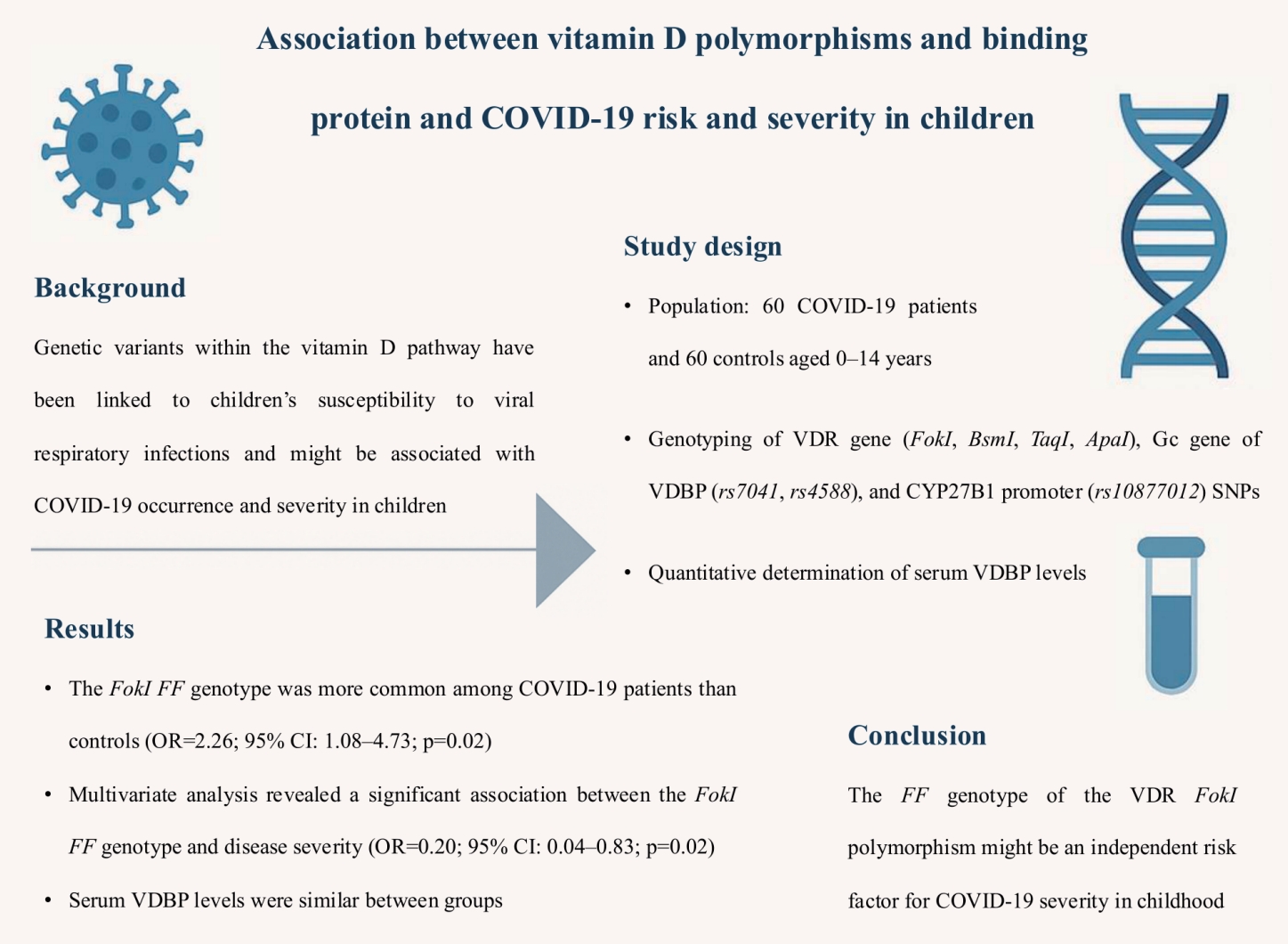
Question: Addressing crucial genetic variants within the vitamin D pathway and coronavirus disease 2019 (COVID-19) susceptibility, the vitamin D receptor, vitamin D binding protein, and CYP27B1-1260 polmorphisms might be associated with COVID-19 occurrence and severity in children.
Finding: The FokI FF genotype might be an independent risk factor for COVID-19 severity in childhood.
Meaning: This research may further elucidate genetic susceptibility to multisystem viral infections and establish genetic markers for severe clinical outcomes.
- Oncology
- HLA‒B*58:01 and skin reactions in pediatric hematology and oncology patients treated with allopurinol
- Parisa Maneechai, Cholada Ratanatharathron, Jassada Buaboonam, Kleebsabai Sanpakit
- Clin Exp Pediatr. 2025;68(12):974-980. Published online October 2, 2025
-
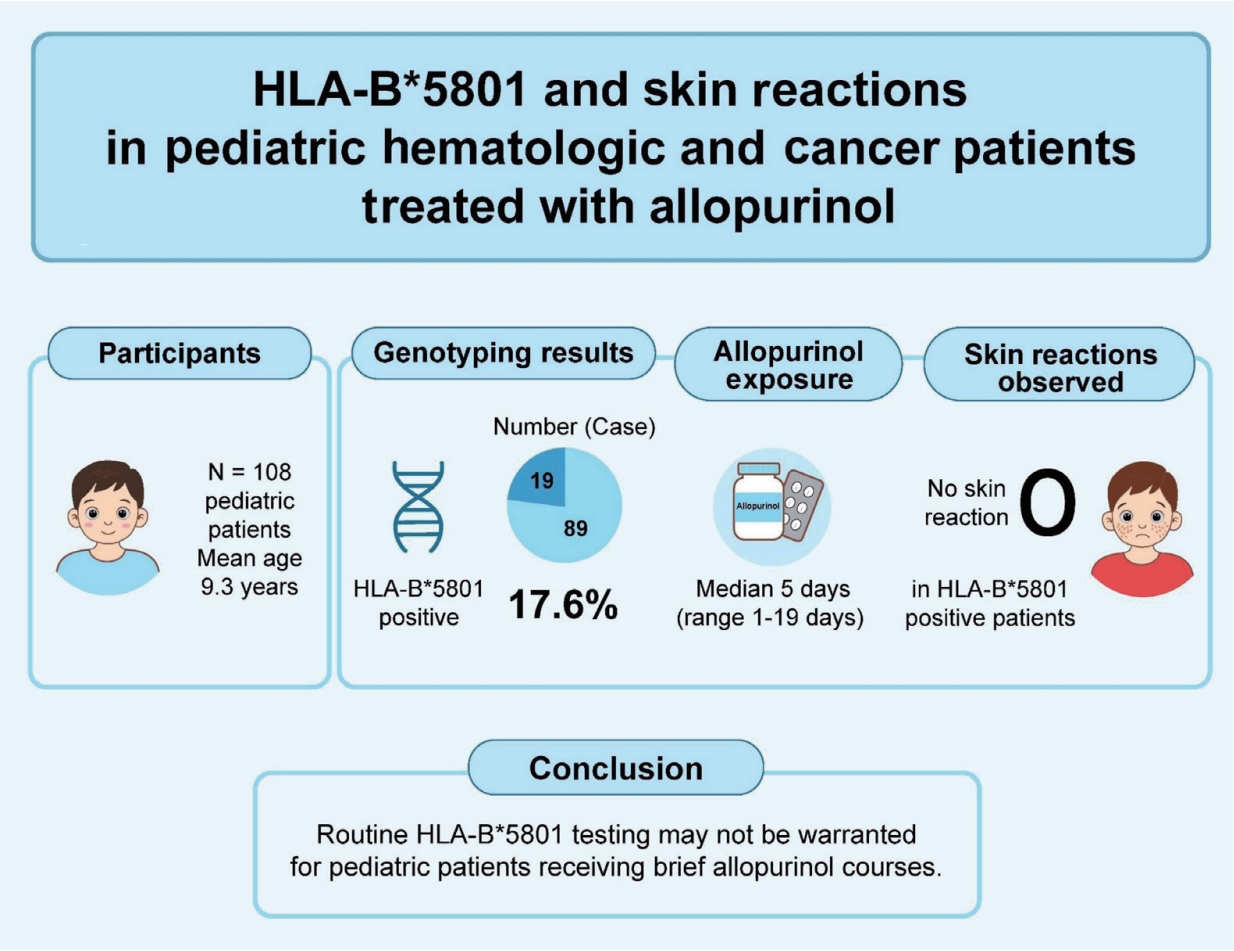
Question: Does human leukocyte antigen (HLA)–B*58:01 increase the risk of cutaneous reactions in pediatric patients with hematological and oncological diseases receiving allopurinol?
Finding: : Of 108 patients, 17.6% carried HLA–B*58:01 but none developed skin reactions. The only rash occurred in an HLA-B*58:01–negative patient.
Meaning: Short-duration allopurinol may mitigate severe cutaneous adverse reaction risk regardless of genotype. Routine HLA-B*58:01 screening may be unnecessary in pediatric patients with hematological and oncological diseases briefly receiving allopurinol.
- General Pediatrics
- Effectiveness of Kinder Lebensqualität Fragebogen (KINDL) and Children’s Somatic Symptom Inventory-24 (CSSI-24) for measuring postacute sequelae of COVID-19 in children: a diagnostic validation study
- Lawrence Shih-Hsin Wu, Pei-Chi Chen, Xiao-Ling Liu, Shu-Tsen Liu, Chi-Hung Wei, Yu-Lung Hsu, Kai-Sheng Hsieh, Huan-Cheng Lai, Chien-Heng Lin, Chieh-Ho Chen, An-Chyi Chen, I-Ching Chou, Wen-Jue Soong, Hui-Ju Tsai, Chung-Ying Lin, Jiu-Yao Wang
- Clin Exp Pediatr. 2025;68(11):944-951. Published online September 12, 2025
-

Question: Although children with postacute sequelae of coronavirus disease 2019 (PASC) may experience persistent symptoms that affect their quality of life (QoL), a screening tool for identifying high-risk children is lacking.
Finding: Kinder Lebensqualität fragebogen (KINDL) and Children's Somatic Symptom Inventory-24 (CSSI-24) were significantly correlated. An optimal KINDL cutoff score (74.75) detected those at high risk of a reduced QoL.
Meaning: Integrating KINDL and CSSI-24 into routine pediatric outpatient care may enable timely identification and interventions for children at risk of PASC-related impairments.
- Gastroenterology
- Fecal microbiome profiles in infants with biliary atresia versus nonbiliary atresia cholestasis: a pilot study
- Nur Azizah, Fadilah Fadilah, Silvia Werdhy Lestari, Muzal Kadim, Fithriyah Sjatha, Hanifah Oswari
- Clin Exp Pediatr. 2025;68(11):932-943. Published online August 20, 2025
-

Question: How does the gut microbiota profile of infants with biliary atresia (BA) differ from that of infants with non-BA cholestasis and healthy infants in the Indonesian population?
Finding: The unique fecal microbiome composition of the BA group differed significantly from that of the other 2 groups.
Meaning: There is an urgent need to improve dysbiosis in BA and non-BA cholestasis to prevent worsening liver injury in cholestasis.
- Endocrinology
- Long-term epidemiological insights into rickets: a nationwide population-based retrospective study
- Chun-Hao Chu, Ying-Chuan Chen, Pei-Yao Liu, Chun-Chieh Hu, Yu-Lung Lin, Feng-Chih Kuo, Chieh-Hua Lu, Tzu-Ju Hsu, Yu-Tung Hung, Fuu-Jen Tsai, Chien-Ming Lin
- Clin Exp Pediatr. 2025;68(11):879-891. Published online August 20, 2025
-

Question: What are the nationwide trends and mortality risk factors of nutritional versus hereditary rickets among children in Asia?
Finding: In 2012–2018, the incidence of rickets steadily increased, whereas mortality rates declined. Mortality is associated with a low household income, anemia, chronic kidney disease, secondary hyperparathyroidism, and a prolonged hospital stay.
Meaning: Early diagnosis and targeted interventions addressing social and medical vulnerabilities are critical to reducing ricket-related mortality.
- Review Article
- Endocrinology
- Continuous glucose monitoring in Korean pediatric patients with type 1 diabetes: current landscape and clinical implications
- Hwa Young Kim, Jaehyun Kim
- Clin Exp Pediatr. 2025;68(11):842-851. Published online October 2, 2025
-

Continuous glucose monitoring (CGM) has transformed pediatric type 1 diabetes care by facilitating tighter glycemic control, reducing hypoglycemia, and improving quality of life.
Recent advances in CGM technology and the expansion of insurance coverage in Korea have led to its broader adoption.
Emerging metrics such as time in tight range offer refined tools for individualized glycemic assessment, highlighting CGM’s evolving role in personalized pediatric diabetes management.
- Original Article
- General Pediatrics
- Trends and determinants in breastfeeding among Korean infants (2007–2021): a nationwide study using the National Health Screening Program for Infants and Children
- Minwoong Kang, Eui Kyung Choi, Jeung Min Lee, Hye-Jung Shin, Woo Ryoung Lee, Son Moon Shin; Korean Society of Breastfeeding Medicine
- Clin Exp Pediatr. 2025;68(10):772-780. Published online July 4, 2025
-
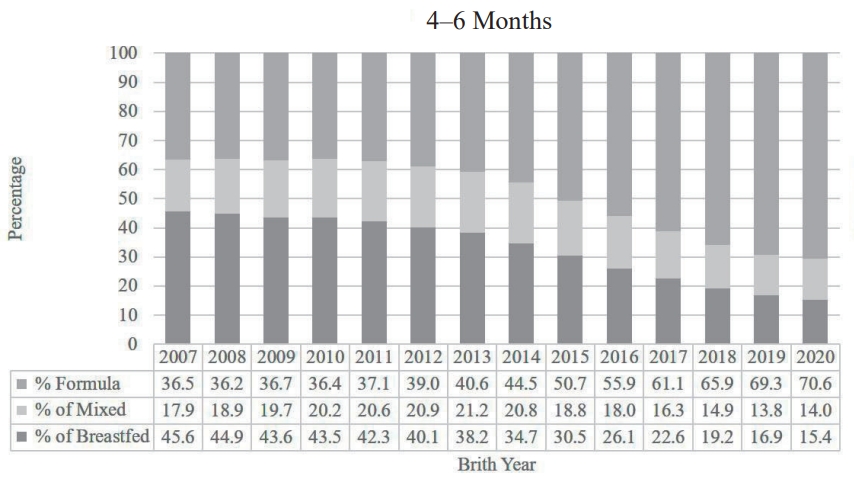
Question: What are the recent trends and determinants of breastfeeding in South Korea?
Finding: Breastfeeding rates in South Korea declined significantly from 2007 to 2021, with lower rates observed in preterm, low-birthweight, and multiple-birth infants as well as rural or lower-income households.
Meaning: Targeted interventions, including prenatal education, postnatal support, and community-based programs, are required to address disparities and improve breastfeeding rates.
- Editorial
- Basic Research
- Stem cell mining: urine cells to biobanking
- Yong Joo Ahn
- Clin Exp Pediatr. 2025;68(10):761-762. Published online September 24, 2025
-

· A safe and accessible source of somatic cell generating induced pluripotent stem cells (iPSCs) in pediatric neurogenic disorders
· A noninvasive and simple method for isolating urine cells, which can effectively reprogram into pluripotent stem cells using episomal vectors
· Establishing a urine-derived iPSC bank as a reliable and scalable resource for disease modeling, therapeutic testing, and personalized medicine in pediatric neurogenic disorders.
- Original Article
- Basic Research
- Linezolid mitigates tissue injury in experimental model of pediatric testicular torsion: TLR-4/MAPK/NF-κB involvement
- Moein Ghasemi, Abolfazl Basiri, Houman Kazemzadeh, Mohammad Amin Manavi, Seyed Mohammad Tavangar, Ahmad Reza Dehpour, Hamed Shafaroodi
- Clin Exp Pediatr. 2025;68(9):700-711. Published online August 26, 2025
-

Question: What pharmacological strategies can limit ischemia-reperfusion injury in pediatric patients with testicular torsion?
Finding: In a rat model of testicular torsion, linezolid reduced oxidative stress, inflammation, and tissue injury via the Toll-like receptor 4/mitogen-activated protein kinase/nuclear factor kappa beta pathway.
Meaning: Linezolid may offer a pharmacological approach to attenuate testicular damage in pediatric patients with testicular torsion, warranting further clinical investigation.
- Pulmonology
- Effect of vitamin C supplement in treatment of childhood pneumonia requiring hospitalization: a randomized controlled trial
- Chutima Phuaksaman, Katechan Jampachaisri, Klaita Srisingh
- Clin Exp Pediatr. 2025;68(9):690-699. Published online April 1, 2025
-

This study assessed the effects of vitamin C on children with community-acquired pneumonia (CAP). Vitamin C supplementation improved clinical symptoms within 48–72 hours compared to placebo but did not reduce the length of hospital stay (LOS). These findings suggest that vitamin C is beneficial for managing CAP severity, but does not affect LOS.
- Nutrition
- Factors associated with thiamin deficiency in pediatric patients with heart disease and receiving diuretics: a single-center study
- Phakwan Laohathai, Rathaporn Sumboonnanonda, Puthita Saengpanit, Chodchanok Vijarnsorn, Chatchawan Srisawat, Kwanjai Chotipanang, Sarawut Junnu, Supawan Kunnangja, Hathaichanok Rukprayoon, Phakkanan Phuangphan, Sompong Liammongkolkul, Arthima Phaokong, Narumon Densupsoontorn
- Clin Exp Pediatr. 2025;68(9):666-672. Published online April 16, 2025
-

Question: Are pediatric patients with heart disease who are receiving diuretics at risk of thiamin deficiency (TD)?
Finding: Fifteen percent of the patients had TD. TD was associated with inadequate dietary thiamin intake and increasing age.
Meaning: The thiamin pyrophosphate effect should be assessed in those with high risk of TD. Dietary counseling should be emphasized to ensure adequate dietary thiamin intake.
- Neonatology (Perinatology)
- Respiratory severity score-guided postnatal systemic corticosteroid therapy for bronchopulmonary dysplasia in extremely preterm infants
- Gyeong Eun Yeom, Ju Sun Heo, Baek Sup Shin, Seh Hyun Kim, Seung Han Shin, Ee-Kyung Kim, Han-Suk Kim
- Clin Exp Pediatr. 2025;68(9):656-665. Published online July 8, 2025
-

Question: Does a respiratory severity score (RSS)-guided postnatal corticosteroid protocol improve respiratory outcomes of extremely preterm (EP) infants without worsening neurodevelopmental outcomes?
Finding: The protocol enabled targeted and early steroid use, thereby reducing severe bronchopulmonary dysplasia without affecting mortality or causing neurodevelopmental impairments.
Meaning: The RSS-guided protocol may offer a more precise and individualized postnatal corticosteroid therapy for EP infants.
- Editorial
- General Pediatrics
- Artificial intelligence in pediatric healthcare: bridging potential, clinical practice, and ethical considerations
- Yoon Lee, Seohyun Hong, Dong Keon Yon
- Clin Exp Pediatr. 2025;68(9):652-655. Published online August 28, 2025
-

· Artificial intelligence (AI) holds transformative potential for pediatric healthcare, with applications spanning prevention, diagnosis, treatment, and follow-up across diverse subspecialties; however, ethical concerns, scarcity of pediatric- specific data, and limited funding remain significant challenges.
· International consensus on pediatric AI guidelines, expanding child-specific datasets, and incorporating explainable AI are essential to ensure safety and trust.
· Multicenter collaboration and increased investment can address these gaps, enabling equitable, reliable, and pediatric- centered AI solutions.
- Review Article
- Other
- Artificial intelligence in pediatric healthcare: current applications, potential, and implementation considerations
- Taejin Park, In-Hee Lee, Seung Wook Lee, Sek Won Kong
- Clin Exp Pediatr. 2025;68(9):641-651. Published online June 25, 2025
-

Artificial intelligence (AI) offers potential benefits in pediatric care, but its real-world adoption requires clinician literacy, ethical and legal safeguards, and cautious implementation. Large language models are emerging across healthcare, but their use in pediatric clinical practice remains premature. Thus, the cautious and accountable implementation of AI is crucial to preventing unintended harm and realizing its potential.
- Original Article
- Neurology
- Establishing an induced pluripotent stem cell bank using urine cells from pediatric patients with neurogenetic diseases
- Hien Bao Dieu Thai, WonWoo Jung, Sol Choi, Woo Joong Kim, JangSup Moon, ByungChan Lim
- Clin Exp Pediatr. 2025;68(8):569-577. Published online April 1, 2025
-
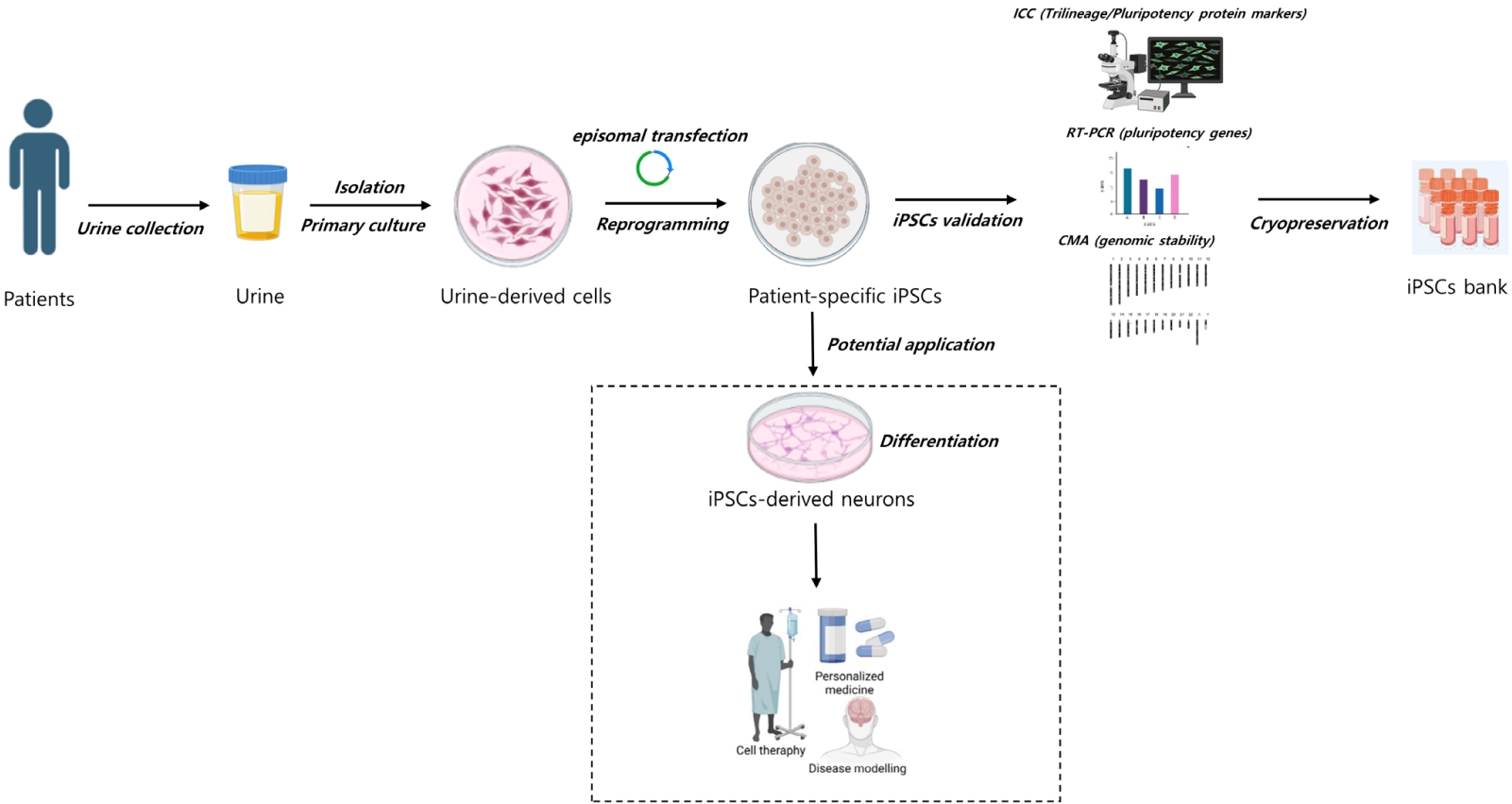
Question: What can be used to create a reliable supply of somatic cells for induced pluripotent stem cells (iPSCs) generation and standardize procedures for building an iPSC bank for researching pediatric neurogenetic disorders?
Findings: Noninvasively acquired urine cells are a desirable cell source for iPSC reprogramming.
Meaning: An iPSC bank can be created from diverse patient cell sources and offer a useful resource for translating research results into clinical therapy for pediatric neurogenetic disorders.
- Editorial
- Other
- Beyond the eye: a multidisciplinary perspective on managing pediatric myopia
- Eoi Jong Seo
- Clin Exp Pediatr. 2025;68(8):566-568. Published online July 18, 2025
-

Myopia is a growing global public health concern because of its association with irreversible vision loss such as myopic traction maculopathy, rhegmatogenous retinal detachment, and glaucoma. The effective prevention of myopia in childhood requires a multidisciplinary approach that integrates ophthalmologic care with lifestyle, nutrition, and sleep interventions. Early detection through regular visual screening in schools and primary care settings and timely ophthalmology referrals are critical to preventing high myopia.
- Original Article
- Neonatology (Perinatology)
- Incidence of neural tube defects in tertiary care university hospital in Bangladesh
- Ismat Jahan, Arif Hossain, Shah Nizam Uddin Shaon, Sadeka Choudhury Moni, Mohammad Kamrul Hassan Shabuj, Sanjoy Kumer Dey, Mohammad Abdul Mannan, Mohammod Shahidullah
- Clin Exp Pediatr. 2025;68(7):530-538. Published online April 1, 2025
-

Question: What is the burden of neural tube defects (NTDs) in a tertiary care neonatal intensive care unit in Bangladesh?
Finding: The overall incidence of NTD was 6.4 (range, 4.59–11.2) per 1,000 live births, and the meningomyelocele complex was the most frequent location.
Meaning: The high incidence of NTD found in a leading tertiary care multidisciplinary referral hospital in Bangladesh may not reflect that of the wider population.
- Characterization of gut microbiota in very low birth weight infants with versus without bronchopulmonary dysplasia
- Anucha Thatrimontrichai, Manapat Praditaukrit, Gunlawadee Maneenil, Supaporn Dissaneevate, Kamonnut Singkhamanan, Komwit Surachat
- Clin Exp Pediatr. 2025;68(7):503-511. Published online February 26, 2025
-

Question: Does the gut microbiota differ between very low birth weight (VLBW) infants with versus without bronchopulmonary dysplasia (BPD)?
Finding: Common respiratory pathogens were notably elevated in the BPD group, whereas anaerobic and butyrate-producing taxa, key components of postbiotics, were dominant in the non-BPD group.
Meaning: In gut-lung communication, the interplay between the intestinal and respiratory systems may implicate pro- and postbiotics in VLBW infants with BPD.
- Pulmonology
- Nonlinear association between neutrophil-to-lymphocyte ratio and asthma in children and adolescents in the United States: a cross-sectional study
- Chuhan Cheng, Liyan Zhang
- Clin Exp Pediatr. 2025;68(7):489-496. Published online March 11, 2025
-

Question: Is there a nonlinear relationship between neutrophil-to-lymphocyte ratio (NLR) and asthma in children and adolescents?
Finding: NLR showed a nonlinear association with asthma, with an NLR threshold of 2.23 identifying individuals at higher risk.
Meaning: An NLR<2.23 may serve as a potential biomarker for asthma risk assessment and management in pediatric populations, thereby offering a simple tool for the early identification of at-risk individuals.
- Neonatology (Perinatology)
- Differential roles of interleukin-6 and adrenomedullin in early diagnosis and mortality predictions in late-onset neonatal sepsis
- Emilly Henrique dos Santos, Gabriel Acca Barreira, Mariana Okay Saippa, Maria Carolina Pires Cruz, Karen Alessandra Rodrigues, Ronaldo Arkader, Thelma Suely Okay
- Clin Exp Pediatr. 2025;68(6):463-471. Published online December 23, 2024
-

Question: Can adrenomedullin (ADM) or interleukin-6 (IL-6) detect late-onset neonatal sepsis (LOS) at admission (area under the curve [AUC]>0.90) as an early diagnostic marker?
Finding: Only IL-6 consistently distinguished survivors from nonsurvivors (AUC>0.90) on admission and antibiotic treatment days 3 and 7. C-reactive protein level identified infections from day 3 but failed to predict outcomes (AUC<0.70).
Meaning: IL-6 level can improve LOS diagnosis and prognosis.
- Hematology
- Impact of Xmn1 polymorphism on hydroxyurea therapy in children with HbE-β non-transfusion dependent thalassemia: a cohort study
- Saheli Roy, Paramita Bhattacharya, Atanu Kumar Dutta, Mrinal Kanti Das
- Clin Exp Pediatr. 2025;68(6):437-444. Published online February 3, 2025
-

Question: Does the T allele of Xmn1 polymorphism favorably influence hydroxyurea efficacy in children of Eastern descent with fetal hemoglobin (HbE)-β nontransfusion dependent thalassemia (NTDT)?
Finding: Decrease in transfusion requirement and increase in height following hydroxyurea therapy was noted in both groups, however, change in CT was more critical than that in CC genotype.
Meaning: T allele of Xmn1 polymorphism favorably influences hydroxyurea efficacy in children with HbE-β NTDT.
- Nutrition
- Differential effects of dietary and physical activity interventions on adiposity of children with obesity
- Anekchoke Tangtongsoong, Chonnikant Visuthranukul, Yuda Chongpison, Sirinuch Chomtho
- Clin Exp Pediatr. 2025;68(5):370-378. Published online February 3, 2025
-

Question: How do dietary intake and physical activity affect body mass index (BMI) z scores and adiposity among children with obesity?
Finding: Higher dietary protein and fiber intakes were significantly associated with a decrease in BMI z scores and adiposity among children with obesity.
Meaning: Optimizing dietary interventions by focusing on protein and fiber intakes could be an effective strategy for managing childhood obesity.
- Immunology
- Serum bactericidal activity against meningococcus in patients with systemic lupus erythematosus
- Soyoung Lee, Kyung-Hyo Kim, Ji Hyen Lee, Han Wool Kim
- Clin Exp Pediatr. 2025;68(5):362-369. Published online January 13, 2025
-
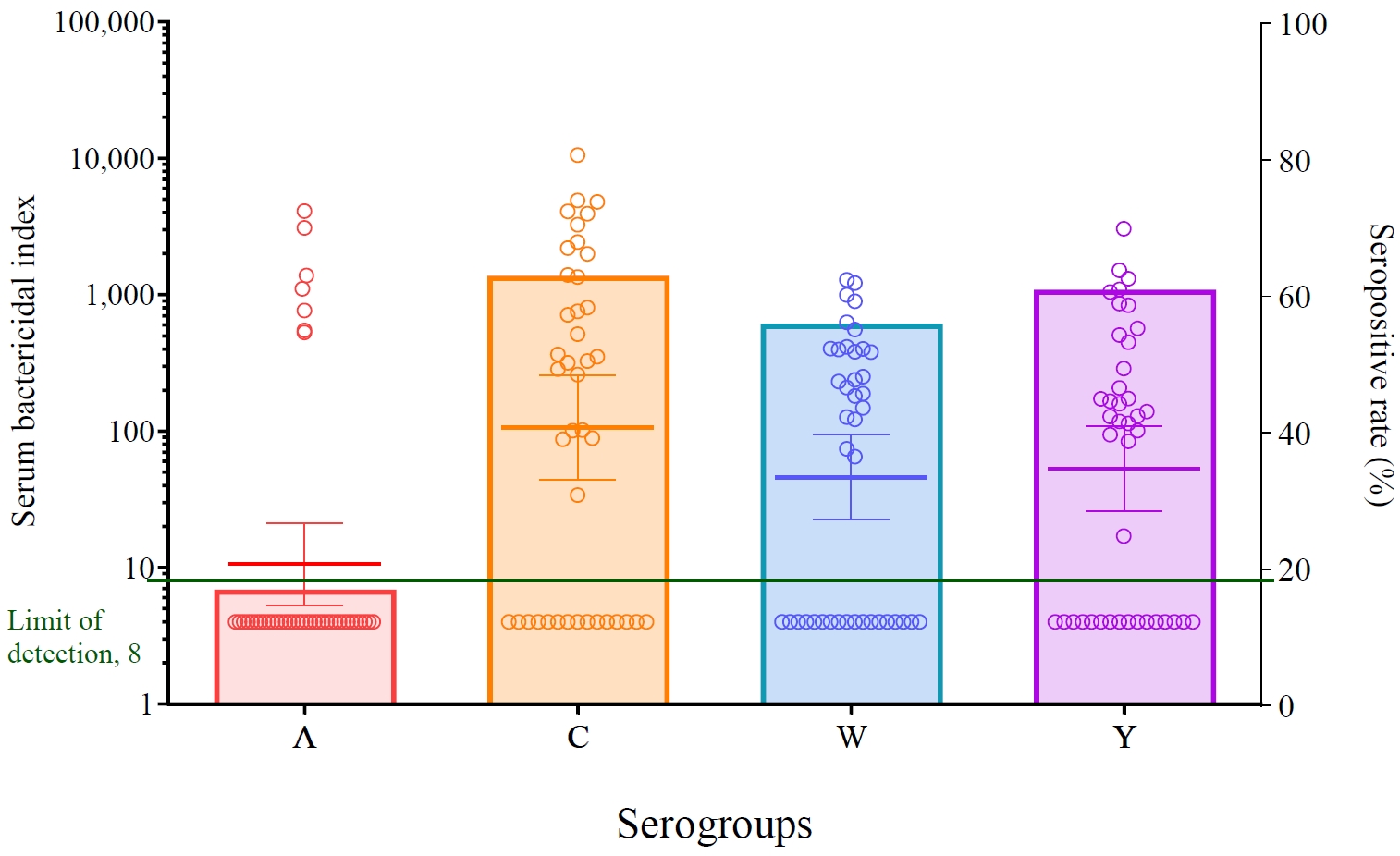
Question: What is the level of immunity against meningococcal infections in patients with systemic lupus erythematosus (SLE) under the age of 19, and is vaccination against meningococcus necessary for these patients, given their susceptibility to infections due to immunosuppressive treatments and disease characteristics?
Finding: Although some of our study patients exhibited serum bactericidal activity against meningococci, most remained seronegative.
Meaning: These findings suggest that patients with SLE who are at risk of meningococcal infection receive appropriate vaccinations.
- Review Article
- Nutrition
- The Korea Infant Physical Growth Examination Survey (KIPGroS): a study protocol
- Jong Woo Hahn, MinSoo Shin, Jin Gyu Lim, Yoon-Joo Kim, Ki Soo Kang, Narae Lee, Seong Hee Jeong, Mun Hui Jeong, Yeoun Joo Lee, Eui Kyung Choi, Jung Ok Shim, Jee Yoon Park, Chan-Wook Park, Joo Young Kim, Su Jin Jeong, Young Hwa Jung, Jaehyun Kim, Chang Won Choi, Ju Whi Kim, Seung Han Shin, Yun Jeong Lee, Young Ah Lee, Choong-Ho Shin, Seung-sik Hwang, Young Eun Kim, Youn Ha Kang, Kyungwon Oh, Sungha Yun, Jae Sung Ko, Jin Soo Moon
- Clin Exp Pediatr. 2025;68(5):352-358. Published online February 13, 2025
-
The suitability of World Health Organization (WHO) growth charts for assessing the growth of children under 3 years of age in all countries remains controversial, and their applicability must be evaluated based on country-specific growth data. The Korea Infant Physical Growth Examination Survey evaluated the suitability of WHO growth charts to contribute to the next revision of growth charts in Korea.
- Allergy
- Global burden of asthma among children and adolescents with projections to 2050: a comprehensive review and forecasted modeling study
- Tae Hyeon Kim, Hyunjee Kim, Jiyeon Oh, Soeun Kim, Michael Miligkos, Dong Keon Yon, Nikolaos G Papadopoulos
- Clin Exp Pediatr. 2025;68(5):329-343. Published online April 22, 2025
-

Pediatric asthma can persist to adulthood and must be effectively managed. This review examined the prevalence of asthma among individuals younger than 20 years and revealed a decline from 1990 to 2021, higher rates in males, and a peak in children aged 5–9 years. Despite a projected continued decrease in prevalence by 2050, asthma will remain a significant health concern for children and adolescents.
- Original Article
- Pulmonology
- Impact of obesity on pulmonary function of preschool children: an impulse oscillometry study
- Anuvat Klubdaeng, Kanokporn Udomittipong, Apinya Palamit, Pawinee Charoensittisup, Khunphon Mahoran
- Clin Exp Pediatr. 2025;68(4):319-325. Published online November 13, 2024
-

Question: Does obesity in preschool children affect lung function, and which obesity indices can predict such alterations?
Finding: Preschool children with obesity exhibit impaired lung function characterized by elevated total and peripheral airway resistance. Waist-to-height ratio was the strongest predictor of such changes.
Meaning: Early obesity prevention and treatment are needed. Monitoring waist-to-height ratio, body weight, and body mass index may help identify children at risk of altered lung function.
- Neurology
- Occurrence of stroke in children and young adults in Indonesia: a multicenter private hospital study
- Jeanne Leman, Veli Sungono, Yosua Timotius Haryono, Muhammad Adam Mudzakir, Dewi Lestari Rahmawati, Callistus Bruce Henfry Sulay, Gilbert Sterling Octavius
- Clin Exp Pediatr. 2025;68(4):303-310. Published online November 13, 2024
-

Question: What is the occurrence of pediatric stroke in Indonesia?
Finding: This multicenter study identified 1,074 stroke cases, predominantly hemorrhagic (83.4%), with males and older children at higher risk. Accidents were the primary cause (73.2%).
Meaning: Pediatric stroke in Indonesia shows critical epidemiological trends, highlighting the need for targeted prevention efforts, particularly for high-risk groups like males and accident victims.
-

-
-
6.02024CiteScore98th percentilePowered by
-
Impact Factor3.6
-
- TOPICS
- ARTICLE CATEGORY
- Editorial Office
-
Korean Pediatric Society
#1606 Seocho World Officetel, 19 Seoun-ro, Seocho-ku, Seoul 06732, Korea
Tel: +82-2-3473-7306 Fax: +82-2-3473-7307 E-mail: office@e-cep.org
Clinical and Experimental Pediatrics is an open access journal. All articles are distributed under the terms of the Creative Commons Attribution NonCommercial License (http://creativecommons.org/licenses/by-nc/4.0/)
Copyright © 2025 by Korean Pediatric Society.











